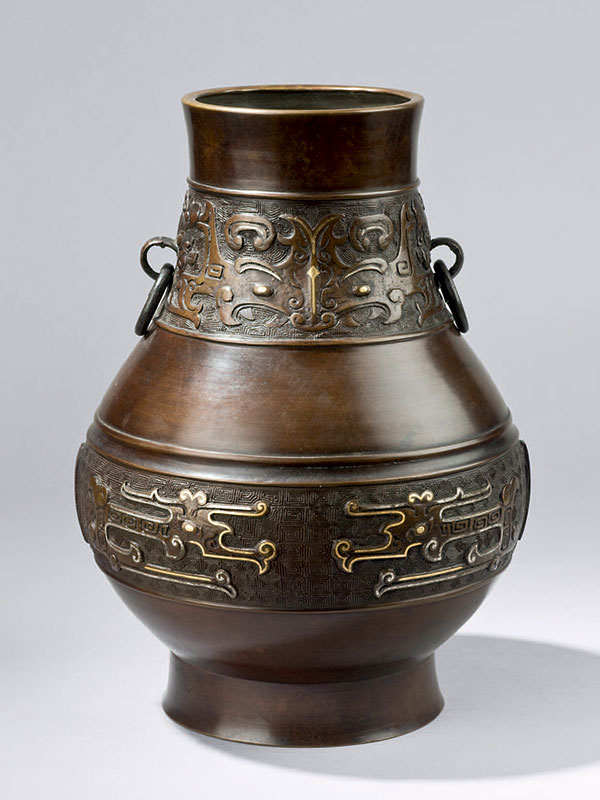Bronze vessel, hu
A large gold and silver inlaid bronze vessel, hu, of baluster shape, supported on a tall, tapered foot and flaring outwards at the neck. The body is divided into five horizontal sections by two friezes. The frieze around the neck is finely cast in low relief with two large taotie masks, and is applied with two smaller taotie masks with ring handles. The lower, widest part of the body has another cast frieze around it, featuring four stylised kui-dragons in low relief on a square diaper background. The vessel is of even dark brown colour. The base has a five-character inscription.
The shape of this bronze vessel is derived from archaic bronze hu vessels of the Warring States period (475 – 221 BC), as indicated by its low-set, pearshaped body and flaring neck. The imitation of archaic bronzes was popular from the Song dynasty (960 – 1279) onwards, especially those inlaid with gold and silver, because their colourful and luxurious features were much admired. In general, inlaid bronzes made from the Song to the early Ming dynasty follow the manner of their archaic prototypes by creating designs with gold and silver inlays, hammered directly into the vessel walls. Later, from the late Ming dynasty onwards, bronzes are cast in low relief and use inlays of gold and silver merely to ornament the relief elements, as is the case with the present example.[1] A closely comparable bronze hu of slightly larger size and of similar decoration, dated to the late 18th to 19th century, is in the Clague collection.[2]
- Mowry, R. D., China’s Renaissance in Bronze – The Robert H. Clague Collection of Later Chinese Bronzes 1100-1900, Phoenix Art Museum, 1993, p. 195
- Mowry, R. D., op. cit. no. 42, pp. 1945



